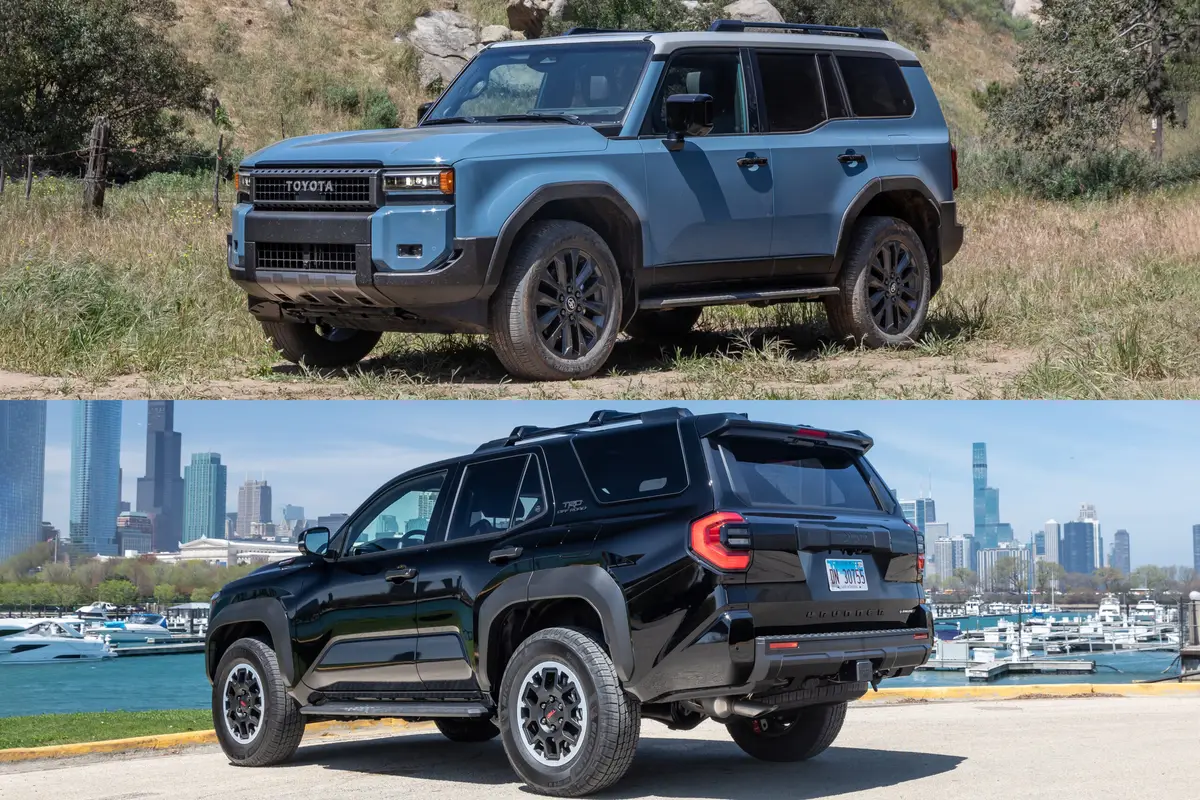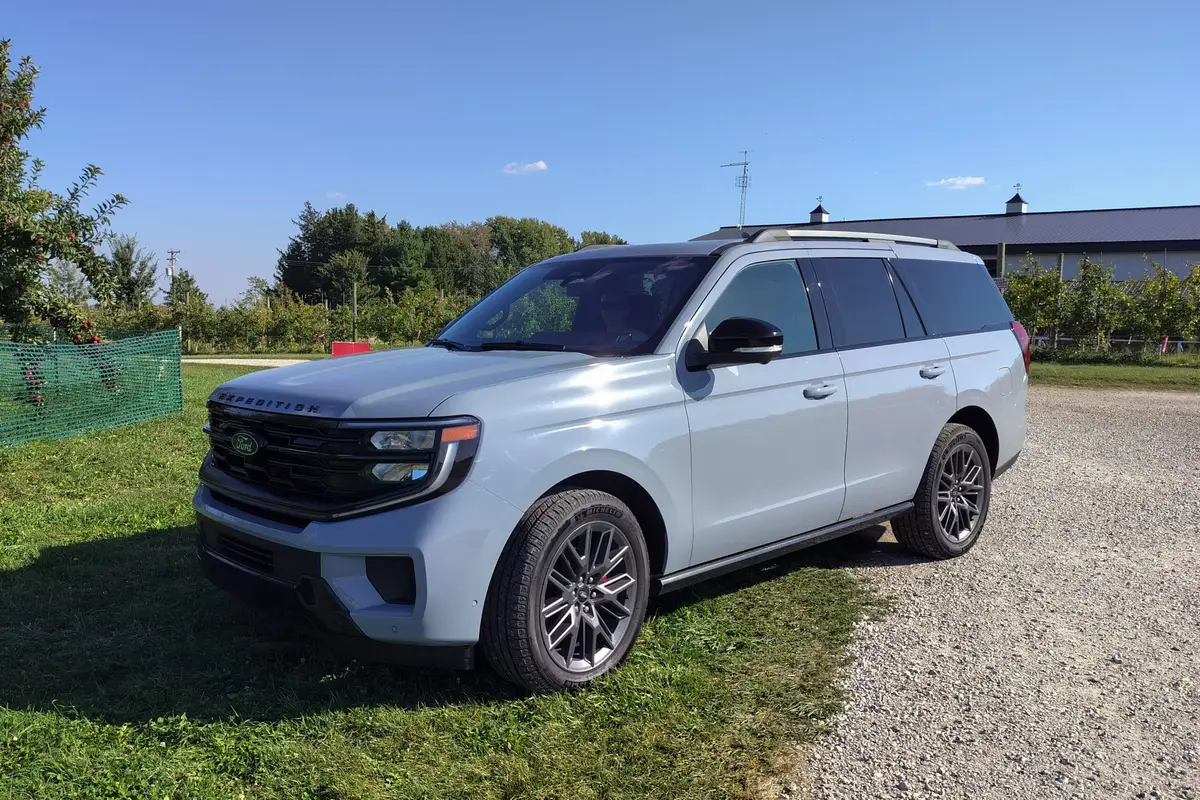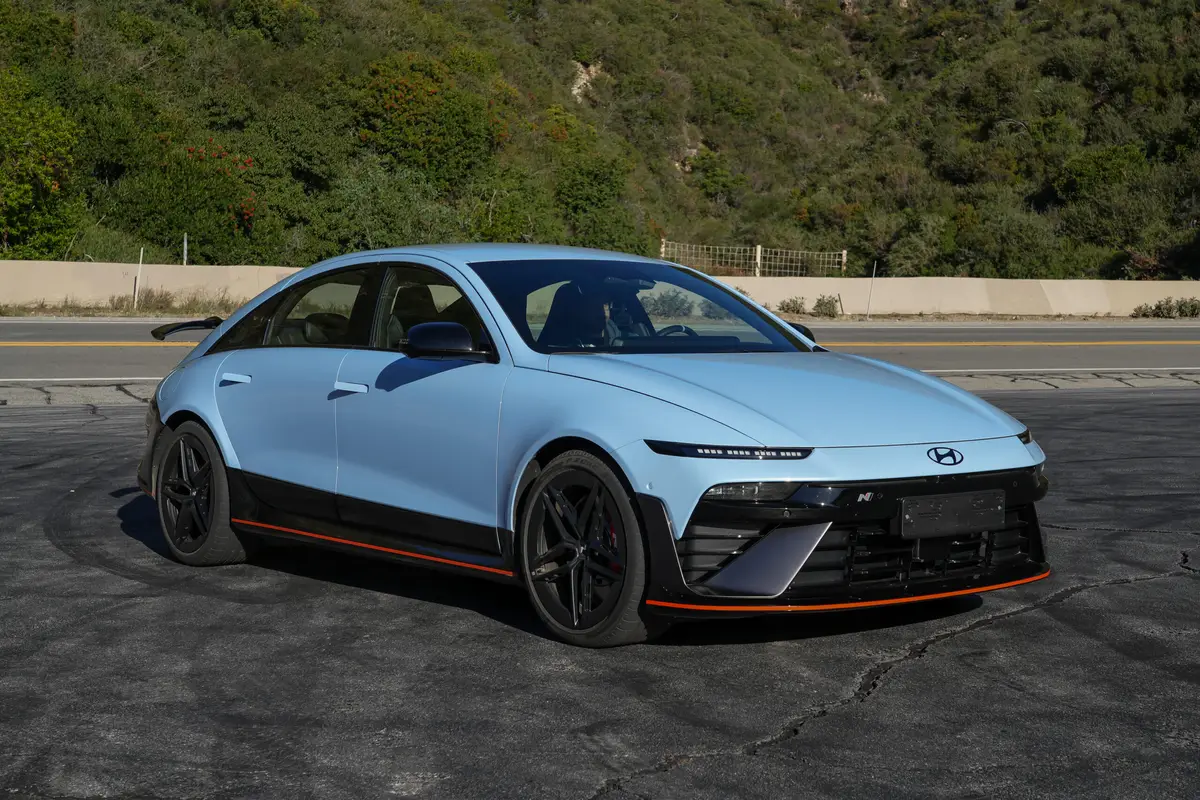2004 Ford F150: What's New
Vehicle Overview
In addition to the redesigned F-150 and F-150 SuperCrew, Ford continues to market the previous-generation model, dubbed F-150 Heritage, as a 2004 model. The F-150 Heritage is a less-expensive alternative to the new F-150. The high-performance SVT F-150 Lightning is still offered, but it’s based on the previous-generation platform. Continue reading for information on the F-150.
Ford used Detroit’s North American International Auto Show in January 2003 as the launch pad for its redesigned F-150 pickup truck. On sale as an early 2004 model, the next F-150 has a new look, a wider track, four-wheel disc brakes, and new rack-and-pinion steering for both 4×2 and 4×4 models. Ford claims that virtually nothing is carried over from the previous F-150.
A new 300-horsepower, 5.4-liter V-8 engine with three valves per cylinder produces 365 pounds-feet of torque. Magnesium cam covers are used for noise attenuation, and the V-8’s variable cam has a 50-degree range. A 4.6-liter V-8 is also available. Torsional stiffness is claimed to be nine times better than that of the previous model. Regular-cab, SuperCab and SuperCrew body styles are available. Ford also continues to produce a high-performance SVT F-150 Lightning pickup that is equipped with a 380-hp supercharged V-8 engine.
Series designations are the same as before, but differences have been sharpened. Five trim levels are available: the “workhorse” XL, the youth-oriented STX, the XLT, the FX4 and the luxurious Lariat edition. Even regular-cab models have access doors, albeit narrow ones. A DVD player is optional in SuperCrew models.
In the 2004 model year, Ford will continue to offer versions of the previous-generation F-150 model, now called the F-150 Heritage.
Exterior
“We were looking for toughness, not brutality,” says J Mays, Ford’s chief designer. “It’s got to look rugged. It’s got to look authentic.” But mainly, it must be “Ford tough.”
Some styling touches are borrowed from the Mighty F-350 Tonka concept truck. Perhaps the most noticeable element is the dip in each side window, created partly to improve mirror visibility but also to enhance the tough look.
The grille on the new F-150 is still trapezoidal in shape, but it’s taller and sports a larger badge. A chrome surround and honeycomb insert go on the Lariat trim level, but other grilles may be body colored. The hood has been raised by 3 inches, the taillamps are taller, and the rear badge is larger.
Both the regular cab and SuperCab (extended cab) have been stretched by 6 inches. Each can have a 6.5- or 8-foot cargo bed. Short beds are available with flared fenders, called Flareside, which feature a small wraparound step on each side. Otherwise, the bed is a slab-sided Styleside design. SuperCab and SuperCrew versions can have a shorter, 5.5-foot cargo bed — an offering available for the first time on the SuperCab — and an 8-footer is available for the SuperCrew.
Tailgates on the 2004 models require less effort to open. Two-tone paint is available on the XLT, Lariat and FX4. The Lariat models ride 18-inch tires, while other versions use 16- or 17-inch rubber.
The regular cabs and SuperCabs have access panels (narrow rear doors) on both sides, which are hinged at the rear and cannot be opened unless the front doors are open. The SuperCrew’s four front-hinged doors open to the front like those on passenger cars. A power sliding rear window is offered for the first time.
Interior
The regular cab and SuperCab have a standard 40/20/40-split, three-place bench seat with cloth upholstery, or they can be fitted with dual captain’s chairs in the back. The SuperCab adds a three-place rear seat, and the four-door SuperCrew also has a three-place rear bench. The center armrest can flip upward, and a storage bin sits atop the instrument panel.
Interior layouts vary according to the series. Some bold instrument panels feature metallic bands that wrap upward. A full-length floor-mounted console with a shifter is available. The Lariat models get large, round, bright-rimmed gauges, but those in other series differ. The Lariat also features a sewed-in French seam on the hood that goes over the instruments. At the lower end of the price scale, the XL has hose-out rubber floormats in a much plainer interior that sports a column-mounted gearshift.
On SuperCab and SuperCrew versions, a new modular overhead rail system can hold a DVD player and other components. New power-down quarter windows go on SuperCab models; these are not the flip-out kind common on pickup trucks.
Under the Hood
The base F-150 engine is a 231-hp, 4.6-liter V-8, while the new 5.4-liter V-8 is rated at 300 hp. A four-speed automatic is standard. Four-wheel-drive models have a standard floor-mounted transfer-case lever that permits shifting in and out of 4WD-High on the move. A dashboard switch activates an optional, electrically engaged transfer case.
Safety
Four-wheel antilock brakes, seat belt pretensioners, load-limiting retractors and child-safety seat top-tether anchors will be standard. Dual-stage front airbags work with an “occupant classification system” sensor in the seat.
F-150 Heritage
Instead of dropping the previous-generation, light-duty, full-size pickup altogether in favor of the new design, Ford decided to keep the old one around until mid-2004 or so. Named the F-150 Heritage, the retained pickup follows on the heels of last year’s Heritage Edition, which helped mark the 100th anniversary of Ford Motor Co.
Rear-wheel-drive and four-wheel-drive models may be equipped with a 202-hp, 4.2-liter V-6 engine or a choice of two V-8 power plants: a 4.6-liter that makes 231 hp and a 5.4-liter V-8 that runs on natural gas. A five-speed-manual gearbox is standard, and a four-speed-automatic transmission is optional.
F-150 SuperCrew
SuperCrew versions of the redesigned F-150 full-size pickup have four, conventional, front-hinged doors. Rear occupants sit on a three-place bench seat, creating six-passenger capacity. Regular-cab and SuperCab models may be fitted with either a 6.5- or 8-foot cargo bed, but the F-150 SuperCrew’s bed shrinks to 5.5 feet in length.
Like regular-cab and SuperCab models, the SuperCrew can be equipped with either a 231-hp, 4.6-liter V-8 or a 300-hp, 5.4-liter V-8. A four-speed-automatic transmission is standard. A DVD player is optional.
SVT F-150 Lightning
Ford will offer its high-performance SVT F-150 Lightning pickup for the last time in the 2004 model year. Production will halt by spring 2004, but additional products from Ford’s Special Vehicle Team (SVT) should be introduced in 2005. One new body color is available for the 2004 season.
Fitted with a supercharged 5.4-liter V-8 engine that develops 380 hp and 450 pounds-feet of torque, the SVT F-150 Lightning uses a heavy-duty four-speed-automatic transmission. Ford claims that this regular-cab pickup can accelerate from zero to 60 mph in 5.2 seconds.
Inside is a 60/40-split bench seat with what Ford calls “aggressive” side bolstering. Special styling touches include crystalline headlamps, a unique front fascia, clear turn-signal lenses, SVT-signature round fog lamps and an LED stoplight. Lower rocker extensions and a side-exit exhaust are installed. Low-profile tires ride on unique 18-inch wheels. Ford first offered an SVT F-150 Lightning in 1995. Back to top
Driving Impressions
Significantly more substantial in its redesigned form, the 2004 F-150 has a heavier, more solid feel than its predecessor. The suspensions react more positively to pavement flaws, rebounding rapidly and only as far as necessary. They recover quickly from large and small bumps. Imperfect surfaces can produce quite a bit of body motion, though it’s not bad for a truck.
Acceleration with the 5.4-liter V-8 is definitely quicker than the 4.6-liter’s performance, though neither ranks as phenomenal. Even with the larger engine, the F-150 takes a little while to really get rolling, but when it does, it feels pretty powerful. Conversing in the F-150 is easy because the cab is pleasantly quiet most of the time. The interiors are roomy and the controls are convenient enough, but the A-pillar grab handles aren’t helpful to every rider.
Featured stories



